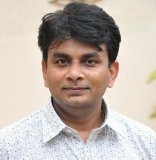Chronicling the Afghanistan Tragedy – V Zahir Shah, Daud Khan and the Saur Revolution
16 Oct, 2001 · 613
Suba Chandran highlights the politics between Zahir Shah and Daud Khan, the two rulers who have ruled Afghanistan from 1933-1973
Zahir Shah, who is now being considered as a key player by the West in setting up any broad-based coalition in the aftermath of the fall of the Taliban, became the King of Afghanistan in 1933. He was deposed by his cousin Daud Khan in 1973.
Under Zahir Shah, Daud Khan had been Prime Minister of Afghanistan and held power during 1953-63 and later during 1973-77. Daud Khan looked to the Soviet Union for economic and military assistance as a result of the Pashtun issue simmering between Pakistan and Afghanistan in 1955; this despite Afghanistan remaining neutral in the emerging Cold War between the two super powers. The Soviet Union provided $ 100 million in 1955 and supplied arms to Afghanistan in 1956.
Internally, Daud Khan introduced several liberal measures that included educational and social reforms. This, however, resulted in increasing the opposition from the conservatives, led by the religious leaders. One significant fallout of the social reforms introduced by Daud Khan was the growth of anti-Soviet sentiments among the conservative elements of Afghanistan. While the religious leaders led the opposition, the Afghan Army, built mainly with assistance from Soviet Union, suppressed the opposition. The opposition to Soviet Union among the conservatives, which germinated during this period, grew in subsequent years and was finally exploited by the US and Pakistan in the late 1970s and 1980s. The Soviet Union also had its own interests in keeping the conservatives under control in Afghanistan; it was facing problems in some of the republics bordering Afghanistan, especially in Tajikistan and Uzbekistan.
Daud Khan was forced to resign in March 1963 and arrive at a compromise with Pakistan over the Pashtun issue. In the aftermath of Daud’s resignation, King Zahir Shah attempted to experiment constitutional monarchy. In 1964, a Constitutional Advisory Committee was set up and a new constitution was approved by the National Assembly. Though the new constitution considered Islam as “the sacred religion of Afghanistan”, significance was attached to secular legal system over Sharia law. According to the new constitution, the House of People was to have 216 elected members, and the House of Elders was to have 84 members, one-third elected by the people, one-third appointed by the king, and one-third elected indirectly by new provincial assemblies. Elections for both houses of the legislature were held in 1965 and 1969.
Internal political and economic situation became unstable during the second half of the 1960s and early 1970s. During this period King Zahir Shah aimed to consolidate power in his hands and refused to promulgate the Political Parties Act, the Provincial Councils Act, and the Municipal Councils Act; these acts would have institutionalized the political processes. He appointed five Prime Ministers between September 1965 and December 1972. An independent Supreme Court, which was to be established according to the 1964 constitution, did not come into being.
At the national level, the divide between the moderates and fundamentalists grew deeper. The moderates, led by the People’s Democratic Party of Afghanistan (PDPA),demanded more reforms, whereas the fundamentalist parties, known as Islamist parties, demanded establishment of an Islamic State based on Sharia.
The political situation, failure of the King to accommodate popular demands and mounting economic crisis, resulted in another change in Afghanistan in 1973; Daud Khan, deposed the King and seized power. The 1964 constitution was abolished and a Republic of Afghanistan was established with Daud Khan becoming the Chairman of the Central Committee of the Republic and the Prime Minister.
During his second tenure, Daud Khan attempted to continue the socio-economic reforms. Significant during this period was Daud Khan’s attempts in establishing relations with other Muslim countries and moving away from Soviet support. Daud was more interested in consolidating his power; this resulted in him alienating the communists, moderates, Islamists and religious fundamentalists.
By the beginning of 1977, the problems facing Daud Khan had increased considerably. Two major leftist factions of the PDPA, the Khalq (People’s Party) and the Parcham (Banner Party) were reunited in 1977 against Daud Khan. Daud was facing pressure not only from the communists, but also from the Islamists, who by now were well organized. The so called “Saur” (April) revolution began with the arrest of Taraki and four other leaders belonging to the PDPA on 26 April 1978. Later, Amin, also a PDPA leader, was also arrested. When the major leaders of PDPA were arrested, it triggered a simultaneous uprising against the Daud regime. Though Amin claimed later that he was the brain behind the coup and it was engineered by him, the uprising was unorganized and unplanned. In the aftermath of the arrests of the PDPA leaders, the military officers who had close connections with the PDPA, feared that they would be exposed and led the coup. The rebels freed Taraki, Karmal and Amin while Daud was killed along with his entire family.


